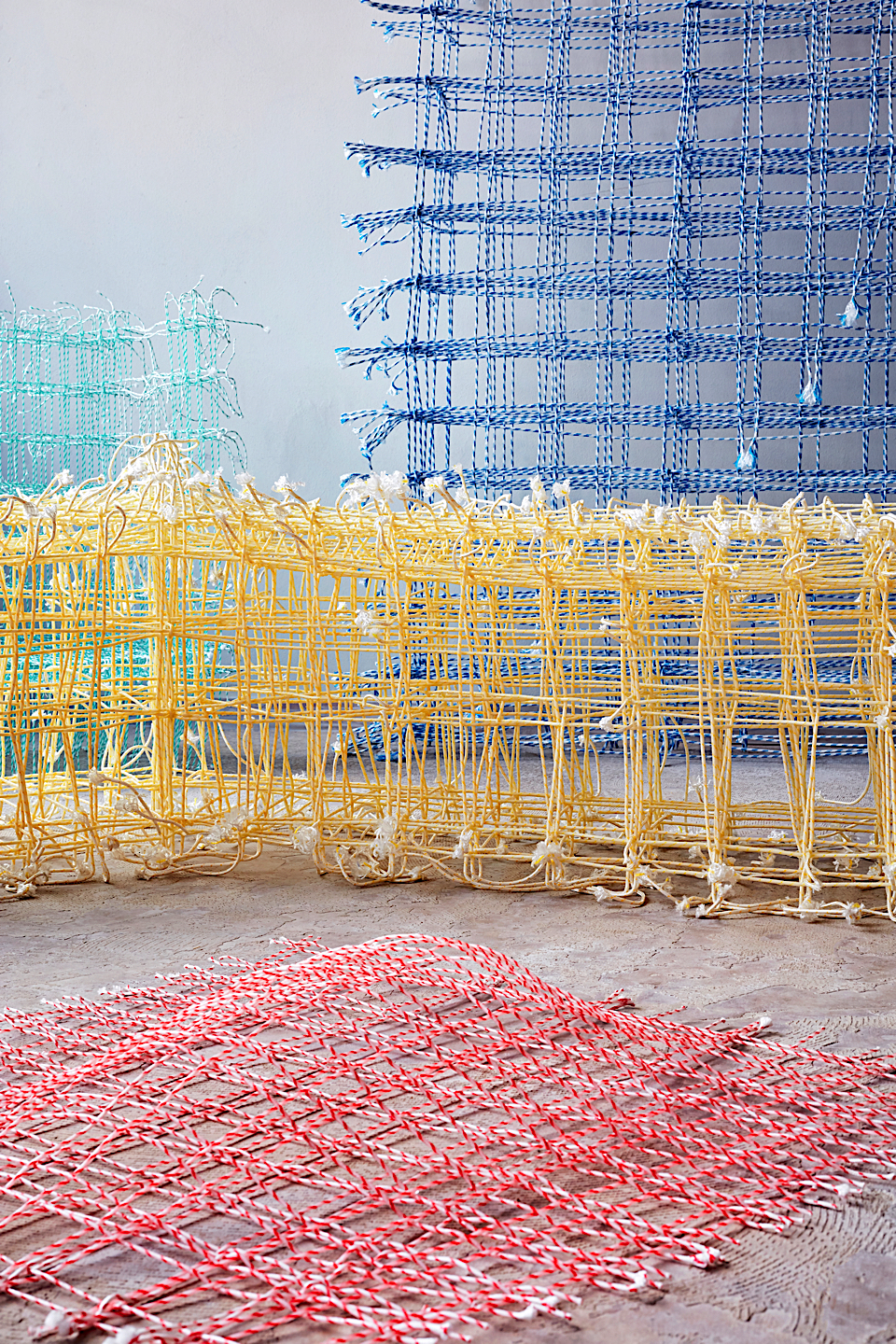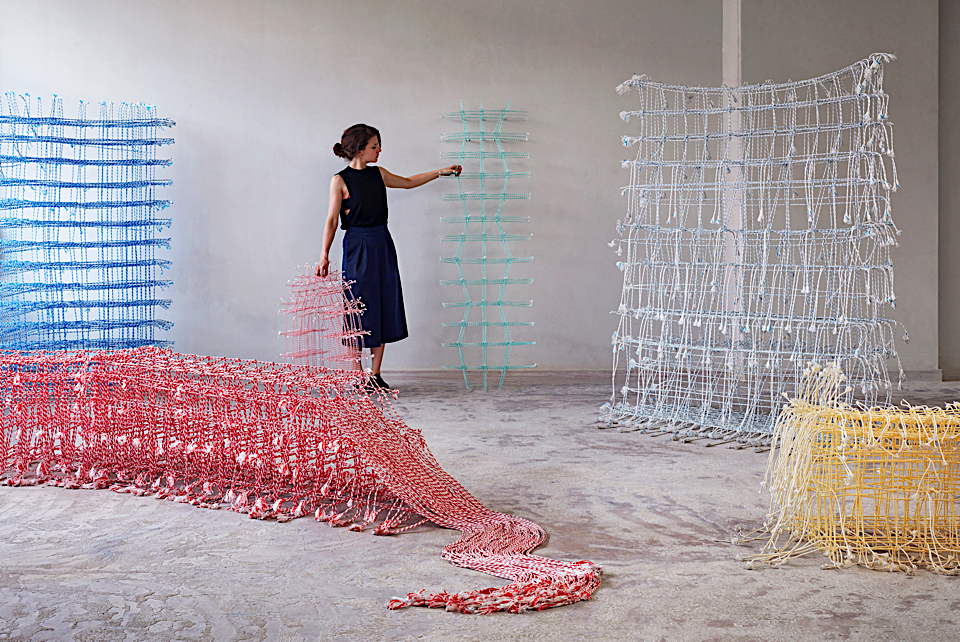TALENTS
fransje gimbrere

photo by Angeline Swinkels
Fransje Gimbrère is a multidisciplinary designer, born and raised in Tilburg, graduated in 2017 from the Man & Identity department at the Design Academy in Eindhoven.
She observes and explores the world with profound critical thinking and an intuitive interest for the aesthetics of shape, color, image and material.
Her concepts and designs often contain contradictory elements and a new playful approach, that she uses to push boundaries, resulting in a little idiosyncrasy or raw edge in every one of them.
The desire to bring textile into the interior in a different way than we are used to, resulted in a technique that creates fragile looking skeletons, hat give the suggestion of a solid volume.
A lack of support and hollowness make them seem on the edge of breaking, though their structure is strong and sturdy.
Therefore, they can not only carry themselves, but also the human body.
The volumes are built up, thread by thread, on a custom-made weaving loom. 3D-woven configurations are experimentally discovered on the spot. An engaging play of repetition and overlapping lines create an interesting visual interference.
This method creates endless possibilities in color, shape, material and application, giving direction within the interior, without diminishing the sense of space.
For you to know her better our editor, Cecile Poignant asked her some questions.
What was your main inspiration for « Standing Textile(s)”?
‘Standing Textile(s)’ was born out of the fascination for textile crafts. Textile crafts enable a person to create something by hand relatively fast with relatively little means. Weaving, knitting, crocheting, knotting etcetera are all very approachable ways to create, but unfortunately are often seen as old fashioned. I wanted to shine a different light on textiles and textile crafts, by using textile in the interior in a different way than solely as upholstery. By 3D- weaving these textile sculptures I’m proposing the idea of textile as a beautiful new building material, with endless possibilities in application.
Do you think the textiles of this project could be used for mass-production in the near future?
At this moment I am still producing my textiles by hand, so mass-production in the very near future might be a little too ambitious. The technique needs more development, but I certainly believe that in the future we can have machines, that 3-dimensionally weave lightweight structures for us to use, live in and even drive in.
Therefore I am now seeking for the right party to help me further in the development of the technique and fine-tuning the material.
What fascinates you about designing materials?
Materials are intermediate products; they can still serve all sorts of applications and leave some room for imagination. Besides that, materials speak to all the senses; therefore designing materials is like designing an almost ritualistic experience for the body. Seeing, hearing and touching materials evokes thoughts and feelings.
It is like a poetic communication between the body and materials.
I’ve always been fascinated by the human body, how it functions, how it behaves, how we present it and how it relates to a space. Fashion and Interior are all about the interaction between the body and materials.
Can you explain more the idea of multidisciplinary that you use to describe your work?
My designs start in ideas or in concepts, not in end products. I start designing by experimenting, trying to push boundaries and show other sides of the things we seem to take for granted. Every concept or design is different and therefore requires a different medium or discipline. The mediums I choose to communicate my designs can range from film, to textiles, to interior products, to garments, to trend forecasts and more, but also combinations of these.
Can you tell me a little about the design process, how do you start your design?
A starting point for a design could be anything, from wanting to show the value of a certain technique, to the way we move in a space, to how we treat our bodies. Having a subject in mind, I start experimenting and sketching 3-dimensionally with materials, shapes and colours, creating an imaginary world or story, with its own atmosphere. From here I begin to work towards the application and purpose of the design, narrowing down by evaluating every creative step and outcome of experiments.
How much impact would you like your work to have on society?
In general, the messages that I want to bring in to the world are a little bit under the surface of my designs. I want to show people different sides and angles of the subjects that my projects are about, without serving the answer on a silver platter. I like to make people wonder and think, which I think is one of the best ways to stimulate viewers.
What are your plans for the future?
At this point I want to continue working on developing my existing projects, hopefully together with others. Collaborating and working in teams, is something that is very inspiring to me. I want to keep learning and can hopefully do so, by collaborating or being part of a bigger company, studio or even multiple collectives to keep sharing ideas and keep creativity flowing. Eventually I hope to make my own autonomous work next to commissioned projects and collaborations.
Cecile Poignant
www.fransjegimbrere.com

photo by Ronald Smits

photo by Ronald Smits

photo by Ronald Smits

